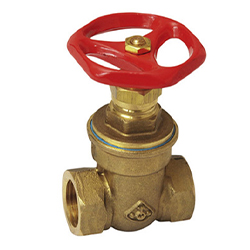GATES
GATES
The primary function of gate valves is to allow or stop the flow of fluids, particularly in cases where an unobstructed flow with minimal losses is required. In practice, these valves are usually either fully open or fully closed. When the valve is fully open, the gate disk is completely withdrawn into the valve bonnet. This operating principle fully clears the entire cross-section of the valve, which is the same diameter as the pipeline on which the valve is installed. Gate valves can be used with various fluids and provide reliable sealing when closed.
Gate Valve Construction
A gate valve consists of three main parts: the valve body, the valve bonnet, and the gate assembly with stem and operating mechanism. The valve body can be connected to the pipeline via standard flanges, threading, or welded joints. The valve bonnet, which houses the moving parts, is usually bolted to the valve body, allowing easy maintenance of the gate valve. The moving part of the gate valve consists of the gate or disc, the valve seat that seals with the gate, the stem, and the mechanism for opening and closing the valve.
Advantages and Disadvantages of Gate Valves
Advantages: Good sealing when closed, Can be used for flow in both directions, Minimal pressure loss through the valve, Can be used with viscous fluids and fluids with varying levels of contamination
Disadvantages: Cannot be opened and closed quickly, Not suitable for flow regulation and throttling, In the open position, they are sensitive to vibrations


